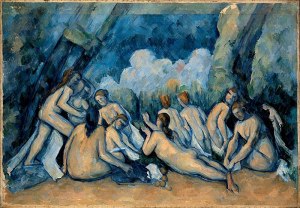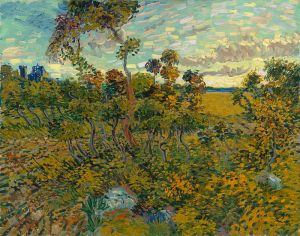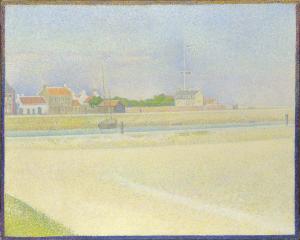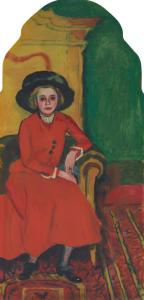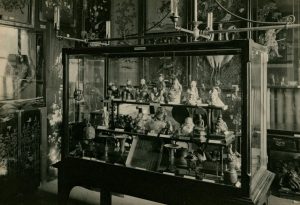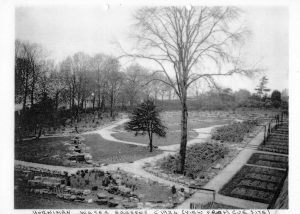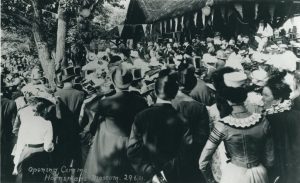Why did a movement shaped in a socialist-driven European climate so heavily influence corporate America?
This essay, written in 2011, discusses what the Bauhaus was, when it was founded, and the people related to it. It will also look at how Bauhaus influenced America. The Bauhaus was a school of art and design, which was founded by Walter Gropius (1883-1969) in Weimar, Germany in the year 1919, just after the end of the First World War. The Nazis eventually closed the school down on 11th April 1933.
“Although it had such as short life it was the most famous art school of the 20th century, playing key roles in establishing the relationship between design and industrial techniques and in breaking down the hierarchy that had previously divided ‘fine’ from ‘applied’ arts.” – Ian Chilvers, 2004
Walter Gropius had originally been put in charge of two art schools in Weimar in 1919: Kunstgewerbeschule (Arts and Crafts School) and the Hochschule für Bildende Kunst (Institute of Fine Arts). These he combined together using the name Staatliches Bauhaus in Weimar (Weimar State Building House). The first few months of the Bauhaus were about reforming art education and creating a new society since Germany had been destroyed due to the effects of the war.
“Oskar Schlemmer, one of the Bauhaus teachers, wrote in 1923: ‘Four years of the Bauhaus reflect not only a period of art history, but a history of the times, too, because the disintegration of a nation and of an era is also reflected in it.'” – Frank Whitford, 1994
The Bauhaus was moved to Dessau in 1925 after being forced to leave Weimar when the government stopped financial support. It was in this location when Gropius stepped down as its director and gave his position to Hannes Meyer (1889-1954). However, due to political differences, Meyer did not remain in this position for long and Ludwig Mies van der Rohe (1886-1969) was then appointed as the director of the school. Despite Mies’ attempts to eradicate any political associations with the Bauhaus, it was shut down by parliament in 1932. Mies opened up the Bauhaus in Berlin but it did not stay there long as the Nazis closed it down in 1933. A number of artists related to the Bauhaus were arrested and killed after Hitler came to power. Many, however, managed to go into exile and some emigrated to America.
“In fact, it was in America that the Bauhaus artists were most successful at disseminating their ideas and designs.” – Anna Hoffman, 2009
When Gropius originally founded the Bauhaus, he had three main aims. The first was to join together the different types of art, for example, painters, sculptors and craftsmen, so that they could work together on joint projects and combine everyone’s skills. The second aim was to make crafts equal to the status of fine arts. According to Walter Gropius’ manifesto, “There is no essential difference between the artist and the craftsman.”
The third aim was to establish “constant contact with the leaders of the crafts and industries of the country’. This would help them to have contact with people from other countries as well. Contact with the outside world was important if the school wanted to survive in a country that was suffering economically after the First World War.
When Hitler came to power and the Bauhaus was forced to close down, many of the artists involved fled to different countries in Europe, such as Britain and Switzerland. A good number of teachers and students, such as László Moholy-Nagy (1895-1946), who taught at the Bauhaus, went to America.
Walter Gropius originally moved to Britain where he worked with the British architect Maxwell Fry (1899-1987), but in 1937, he moved to America where he subsequently taught at Harvard Graduate School of Design. An ex-student, Marcel Breuer (1902-81), worked alongside Gropius at Harvard, teaching architecture.
Moholy-Nagy was a sculptor, painter and experimental artist who began teaching at the Bauhaus in 1923. Although he had left the school in 1928, long before the Nazis closed it down, he still progressed to the United States like many of the other teachers. Moholy-Nagy lived in Chicago where he eventually launched the New Bauhaus in 1937. Unfortunately, this did not last long and was closed in 1938. After this, he founded his own School of Design in 1939, which he directed until he died in November 1946.
So, how did the Bauhaus principles catch on in America?
Florence Knoll (1917-2019) was a student at the Bauhaus when Mies van der Rohe was the director. She also emigrated to America after the war had broken out in Germany. At this time in America, new buildings such as skyscrapers were being built and Knoll realised that these modern structures would also need modern interiors and furniture. The Bauhaus designs were the right style for this and Knoll began to distribute Bauhaus furniture.
Bauhaus’s design follows the rule “form follows function“, which was originally stated by an American architect, Louis Sullivan (1856-1924). The rule meant that the object working for its intended purpose is more important than what it looks like. Mies van der Rohe adapted this phrase to “less is more”. The Scandinavian shop IKEA is an example of mass-produced Bauhaus furniture. If Bauhaus had not existed, IKEA may never have existed. Although IKEA originated in the Scandinavian countries, it has become a global brand, meaning Bauhaus is still influencing many people to this day.
Marcel Breuer created the Wassily Chair in 1925, named after Wassily Kandinsky (1866-1944), who was once a teacher at the Bauhaus. As is apparent, the chair has not been decorated in any way. It has been made to work for its intended purpose: for people to sit on. The chair is made out of steel and it is said that Breuer was supposedly inspired by a bicycle frame.
Herbert Bayer (1900-85) was a student at the Bauhaus for four years. Bayer later worked at the school after it had moved to Dessau when Moholy-Nagy opened a Druck und Reklame workshop for printing and advertising. Bayer was appointed to direct the workshop in 1925, the same year that he designed the bank notes for the Bank of Thuringia.
Bayer is famous for designing the typeface Universal at the age of 25 (1926). The sans serif font was completely different to the typical Gothic examples used in Germany at the time. Not only was the style of font different, but Bayer had also completely rejected capital letters, arguing that it would be easier to have one alphabet rather than two. This was unlike what the Germans were used to because not only do they, like in English, used capital letters for names and beginnings of sentences, but they also use capitals for the first letter of every noun.
Hence the name Universal, the typeface was intended for international use and not just in Germany. In fact, there was no sign of any German influence other than its connection to the Bauhaus because there were no umlauts on any of the letters. The typeface fits with the Bauhaus movement because it is simple and easy to read.
During and after the war years, America began to use Bauhaus ideas in their advertising. Art critic Alain Weill (born 1946) suggests that all things related to graphic design derive from Bauhaus. Since America was using Bauhaus in the advertising sector, the movement’s influence quickly spread across the country.
So, why did a movement shaped in a socialist-driven European climate so heavily influence corporate America? The Second World War had a significant part to play in Americans being inspired by the Bauhaus movement. The reason so many teachers and students from the Bauhaus went to America in the first place was due to the rise of the Hitler regime and Nazi party. If they remained in Germany or even in the neighbouring countries, they were at risk of being killed. Moving to the USA gave many of the Bauhaus associates the chance to teach their skills and beliefs to American students. Walter Gropius and Marcel Breuer both taught architecture at the Harvard Graduate School, where they inspired students to adopt the Bauhaus way of thinking.
War was not the only reason that America began to use Bauhaus ideas. Gropius stated in his manifesto that there should always be contact with leaders of the industry in other countries, so it was likely the Bauhaus already had some contact with America before the start of the war.
If the Bauhaus design ideas had not been effective, they would not have caught on in America no matter how many teachers and artists moved there. Americans began using Bauhaus because they liked the new, modern ideas, which worked with their developing economy and cities. Bauhaus was their solution to the type of furniture needed for their brand-new skyscrapers and corporations. American advertising industries began using European ideas because they were something new and fresh. Herbert Bayer’s typeface was usable in most countries, which also appealed to worldwide advertising agencies. Overall, even though the war brought people from Europe, it was the Bauhaus principles that influenced corporate America.
If you would like to support my blog, become a Patreon from £5p/m or “buy me a coffee” for £3. Thank You!



































